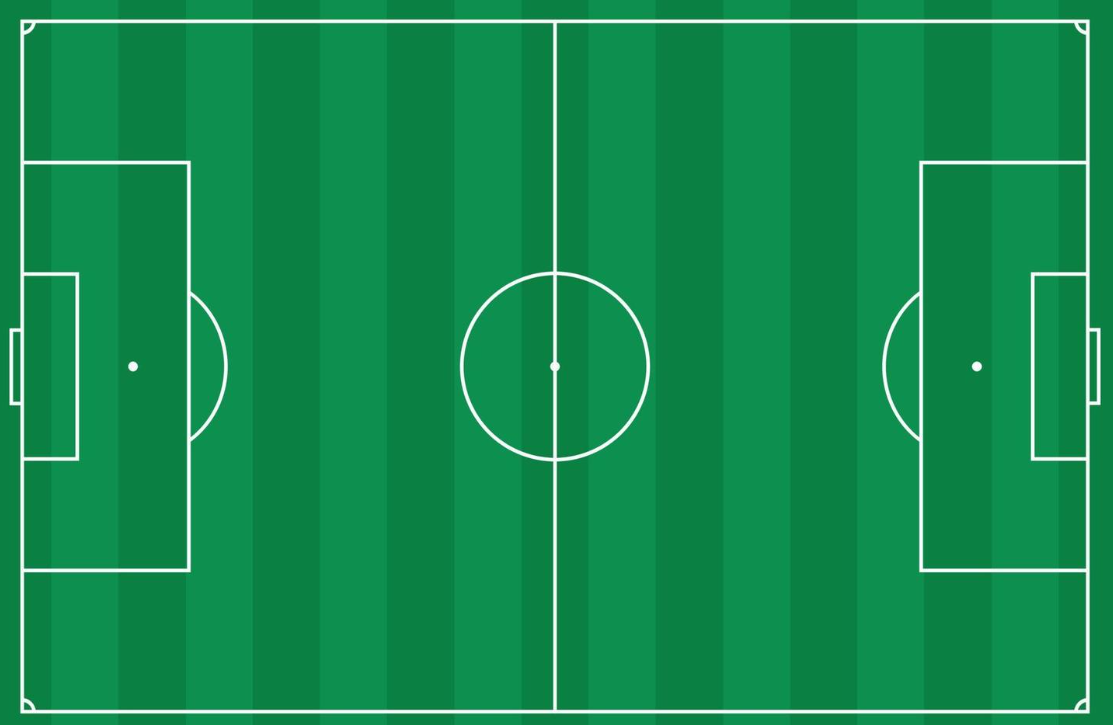Soccer field diagram is a visual representation of the layout and markings of a soccer field. It provides a detailed illustration of the field’s dimensions, including the goal area, penalty area, center circle, and touchlines.
This diagram is essential for coaches, players, and referees to understand the field’s layout and markings for effective gameplay and officiating. Additionally, it serves as a useful tool for planning and strategizing during training sessions and matches. Understanding the soccer field diagram is crucial for anyone involved in the sport to ensure proper adherence to the rules and regulations governing the game.
Whether it’s for training purposes or simply gaining a better understanding of the field, the soccer field diagram is a valuable resource for all involved in the sport.
Table of Contents
Components of a Soccer Field Diagram
Soccer Field Diagram

A soccer field diagram is essential for understanding the layout and markings of a soccer field. It provides a visual representation of the field, helping players and coaches grasp the dimensions and key areas of play. Let’s explore the crucial components of a soccer field diagram:
Field Dimensions
Soccer fields have standard dimensions that must be adhered to for official matches. The field’s size impacts gameplay and player positioning.
Field Markings
The field markings on a soccer field diagram include lines and areas that define the boundaries and key zones of the field.
Goal Area
The goal area, also known as the goal box, is critical in front of the goal where specific rules apply, such as goal kicks.
Penalty Area
The penalty area, often referred to as the 18-yard box, is a significant area where penalty kicks are taken and certain fouls result in penalties.
Types of Soccer Field Diagrams
Types of Soccer Field Diagrams:
When it comes to soccer field diagrams, various types cater to different age groups and playing formats. Understanding the differences between these diagrams is essential for effective game planning and strategy.
Standard Soccer Field Diagram
The standard soccer field diagram is used for professional matches and adheres to FIFA regulations. It consists of specific markings such as the center circle, penalty box, goal area, and corner arcs. This diagram provides a clear layout for players and coaches to strategize effectively.
Youth Soccer Field Diagram
The youth soccer field diagram is tailored to accommodate younger players and smaller field sizes. It typically features smaller dimensions, reduced goal sizes, and simplified markings to suit the age and skill level of youth players. This diagram promotes skill development and enhances the overall playing experience for young athletes.
How to Read a Soccer Field Diagram
Understanding a soccer field diagram is crucial for players, coaches, and fans alike. It can help you visualize the game’s flow, and player positioning, and even identify scoring opportunities. Whether you’re looking for a printable template or an editable version, there are plenty of resources available to help you master the soccer field diagram.
How to Read a Soccer Field Diagram Soccer is a game played on a rectangular field with specific markings. Understanding the soccer field diagram with measurements is crucial for players, coaches, and spectators alike. The diagram displays various lines and player positions that make up the playing surface. Here’s a breakdown of how to read a soccer field diagram with labels. Understanding Field Lines The soccer field diagram includes several lines that define the playing surface.
Uses of Soccer Field Diagrams
Soccer field diagrams play a crucial role in various aspects of the sport, aiding coaches, players, and strategists in visualizing and planning their game tactics effectively.
Coaching and Training

Coaches utilize soccer field diagrams during training sessions to illustrate specific plays, formations, and player positions. By visually mapping out strategies, coaches can effectively communicate game plans to their teams.
Game Strategy Planning
Game strategists rely on soccer field diagrams to analyze opponents, devise tactical approaches, and optimize player positioning. These diagrams provide a visual representation that aids in developing winning strategies.
Evolution of Soccer Field Diagrams
Soccer field diagrams have undergone significant evolution over the years, reflecting changes in technology and the sport itself. From the humble beginnings of hand-drawn sketches to the incorporation of cutting-edge technology, the evolution of soccer field diagrams has not only enhanced the way the game is understood but also revolutionized the way it is played and analyzed.
From Hand-drawn to Digital
The earliest soccer field diagrams were simple hand-drawn sketches, often lacking precision and consistency. These rudimentary diagrams were limited in their ability to convey the intricate details of the playing surface, making it challenging for players, coaches, and spectators to grasp the dynamics of the game.
Incorporating Technology
With the advent of digital technology, soccer field diagrams have become more precise and visually appealing. Advanced software and design tools have enabled the creation of highly accurate and detailed diagrams, offering a comprehensive representation of the playing surface.
Challenges in Soccer Field Diagram Design
Designing soccer field diagrams with labels and positions comes with a set of challenges that require careful consideration to ensure accuracy and clarity.
Maintaining Accuracy
Accurate representation of soccer field diagrams with positions is crucial to provide players and coaches with the correct visual information.
Ensuring Clarity
Clarity in printable soccer field diagrams with positions is essential for easy understanding and effective communication during training sessions or game planning.
Future Trends in Soccer Field Diagrams
Discover the latest advancements in soccer field diagrams, paving the way for enhanced game strategies and player positioning. Stay ahead with innovative templates, editable layouts, and vector drawings for optimal performance on the field. Explore vertical, 7v7, or 11v11 designs to elevate your soccer experience.
Virtual Reality Integration
Virtual Reality (VR) is revolutionizing the way coaches and players engage with soccer field diagrams. Through VR Integration, coaches can provide immersive training experiences, allowing players to virtually step onto the field, visualize tactics, and understand spatial awareness. This technology offers a new dimension to training, enhancing player development and tactical understanding.

Interactive Coaching Platforms
Interactive Coaching Platforms are empowering coaches to create dynamic and engaging training sessions using soccer field diagrams. These platforms enable coaches to interactively demonstrate strategies, analyze game scenarios, and provide real-time feedback. By integrating video analysis and tactical insights, coaches can optimize training sessions and enhance player performance. In conclusion, as technology continues to advance, the integration of Virtual Reality and Interactive Coaching Platforms will play a pivotal role in shaping the future of soccer field diagrams.
Conclusion
Understanding the soccer field diagram is crucial for players, coaches, and referees. The detailed markings and dimensions play a significant role in the game. By utilizing the insights from this post, individuals can gain a comprehensive understanding of the layout and markings of a soccer field, enhancing their overall experience in the sport.

